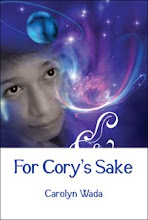Between laying down and falling asleep, Roci makes up stories in his head. This is one of the personal traits of mine that I wrote into one of my characters. Between laying down and falling asleep, nearly every night, I think about the lives of imaginary people. I usually think about these people in the context of a scenario; which develops into a scene; which multiplies into multiple alternate scenes. The alternate scenes smash together; they meld together; their individual pieces pull on each other and combine; some pieces fall out as by-product. (I'd love to visualize the process as solar flares, but it's probably more like a chemical reaction in a beaker) My head is a beaker full of reacting fictional elements.
Most of what goes on in my head stays there. (Huh, a Las Vegas commercial just popped into my head) Much of it is about borrowed characters--Batman, Frodo, Brock from Pokemon . . . Much of it isn't to any point. I don't see the point in writing out pointless scenes; and I do see the point in keeping my Batman fan fiction to myself.
For Cory's Sake, though, was different--more original and meaningful to me; surprisingly cohesive and long-running; and finally, very insistent about getting out. It was beyond insistent. It got a wire hanger and picked my double lock of laziness and inertia. I actually began to write out my ideas as consciously ordered words in a word processor. I kept on writing, eight hours a day for a while. I finished a complete first draft--about 300 pages of beginning, middle and end-type stuff.
(I let the draft sit in a box for 3 years)
I revised, rewrote, revised and published, and it all felt very compulsory. I can say that I know what "compelling" feels like. A story woke me up and pulled me out, like an eager pup taking its "master" out for a run. An exhilarating (and exhausting) run, I'll add.
Now, I've been paying more attention to an older pet story, lately. Its characters existed and were doing things before Roci, Kerry, William, Jeffrey, etc.x 4 were ever born. And I've decided to take this one out for a walk; see where we'll go. So I'm writing again--I guess that's the big announcement.
The characters are two brothers who have differing personalities, and adventure(s). The settings are Los Angeles, Earth (where I lived for 6 years) and Cory. It is in part a story of how at least one Earthling learned of Cory (and naturally he told at least one other person; and two people sometimes keep a secret less well than one; and one thing leads to another, and eventually to For Cory's Sake)
The two brothers are Sam, who is 19 at the moment, and Corrin, who doesn't know how old he is. By the end of our journey he'll know, and I'll know a lot more too, and will hopefully see fit to share where we've gone within the pages of a newly published (on Smashwords, at least) book.



